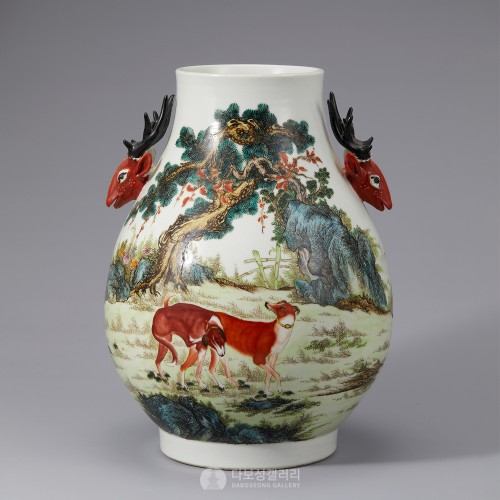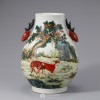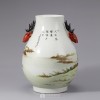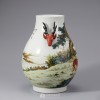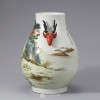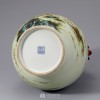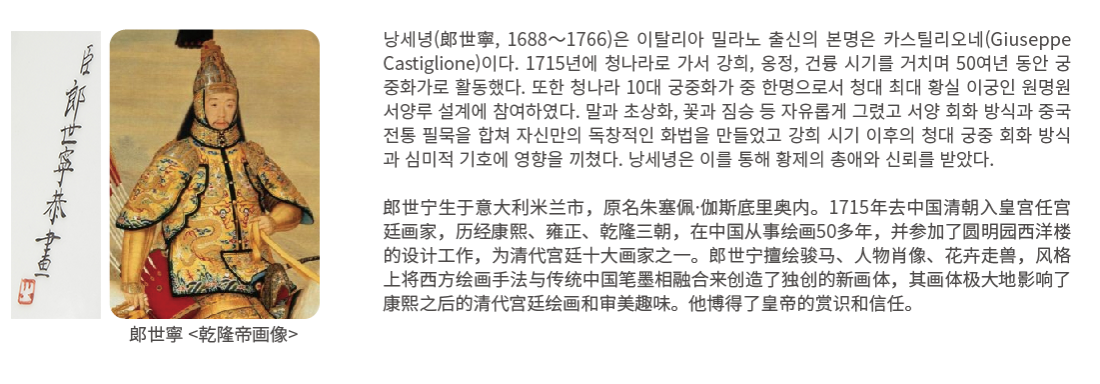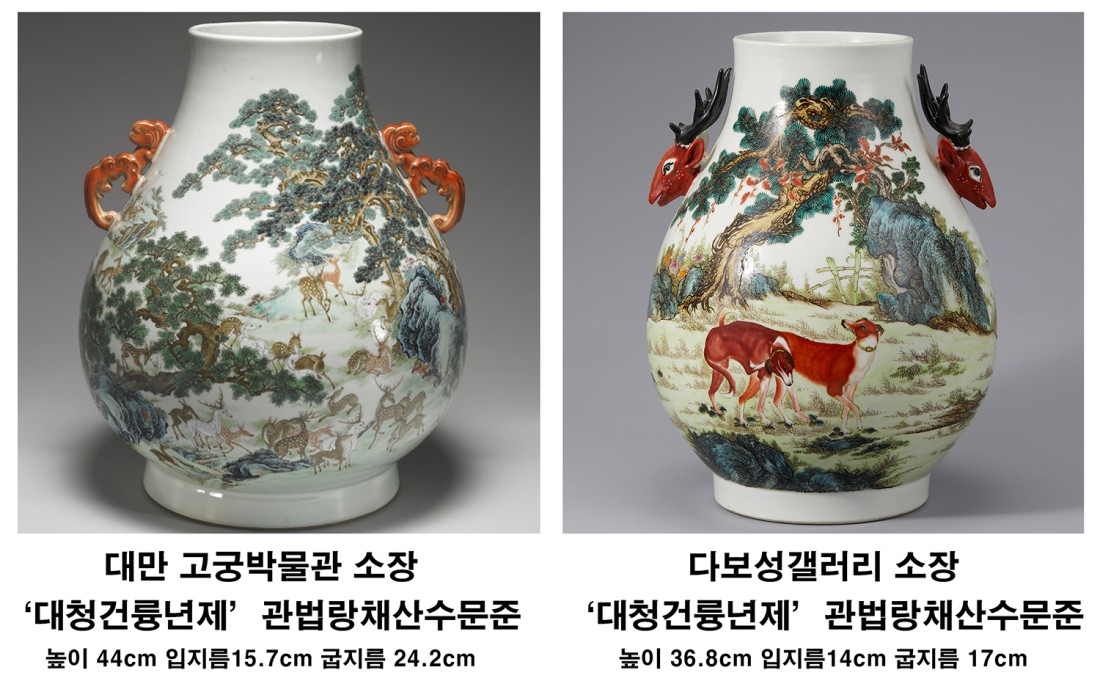본문
위로 곧게 뻗어 있는 구연부에 목은 짧고 어깨는 처졌으며 몸통의 저부가 강하게 부푼 형태의 준(尊)입니다.
준(尊)은 제사 때 술이나 명수(明水) 따위를 담는 긴 항아리 모양의 그릇을 말합니다.
백색 바탕에 들판 위를 걷는 두 마리의 충견과 푸른 소나무, 측백나무, 시냇물, 꽃 등의 자연 풍경을 그리고, 녹색, 붉은색, 황색 등 여러 색의 법랑채(琺瑯彩)를 엷게 또는 진하게 사용해 생동감을 더했습니다.
필법이 정교하고 농담은 정취가 가득합니다.
어깨에는 당나라의 유명한 시인 유장경(劉長卿, 709~789)이 쓴 시 <증서인노소부(贈西鄰卢少府)> 가운데 '개는 차가운 연기 속에서 짖고, 까마귀는 노을 속에서 노래한다'의 내용을 신하 낭세녕((郞世寧, 1688~1766)이 정성을 다해 그렸다는 뜻의 '犬吠寒煙裹 鴉鳴夕照中 臣郎世寧恭畫(견폐한연과 아명석조중 신낭세녕공화)' 문구가 쓰여 있습니다.
어깨 양쪽에는 재물로 쓰였던 붉은 사슴 얼굴이 첩화(帖花)되어 있으며, 굽의 바닥에는 청나라 건륭제(1736~1795) 때 만들었음을 의미하는 '대청건륭년제(大淸乾隆年製)' 관지가 있습니다.
낭세녕(郞世寧, 1688~1766)은 이탈리아 밀라노 출신으로 본명은 카스틸리오네(Giuseppe Castiglione)입니다.
1715년에 선교사로 청나라에 들어가 강희, 옹정, 건륭 시대(1662~1795)에 50여 년 동안 황실의 궁중화가로 활동하면서 많은 도자기 그림을 남겼습니다.
또한 청나라 10대 궁중화가 중 한 명으로서 청대 최대 황실 이궁인 원명원(圓明園)의 서양루 설계에 참여하였습니다.
말과 초상화, 꽃과 짐승 등 자유롭게 그렸고, 서양 회화 방식과 중국 전통 필묵을 합쳐 자신만의 독창적인 화법을 만들었으며, 강희 시기 이후의 청대 궁중 회화 방식과 심미적 기호에 영향을 끼쳤습니다.
낭세녕은 이를 통해 세 황제의 총애와 신뢰를 받았습니다.
━━━━━
Lang Shining (郞世寧, 1688~1766) was born in Milan, Italy, and his original was Giuseppe Castiglione.
In 1715, he served as an artist for over 50 years at the imperial court of three Qing emperors, the Kangxi, Yongzheng, and Qianlong emperors.
Also, Lang Shining was one of the ten greatest imperial court artists of the Qing Dynasty, who participated in the design of the Western Building in the Old Summer Palace, also known as Yuanmingyuan of the Qing dynasty.
He painted portraits, flowers, and animals combining his European painting style with Chinese themes and taste, and created a unique style.
After the Kangxi period, it influenced the imperial court's painting style and aesthetic taste of the Qing Dynasty, which made him favored and appreciated by the three emperors.
